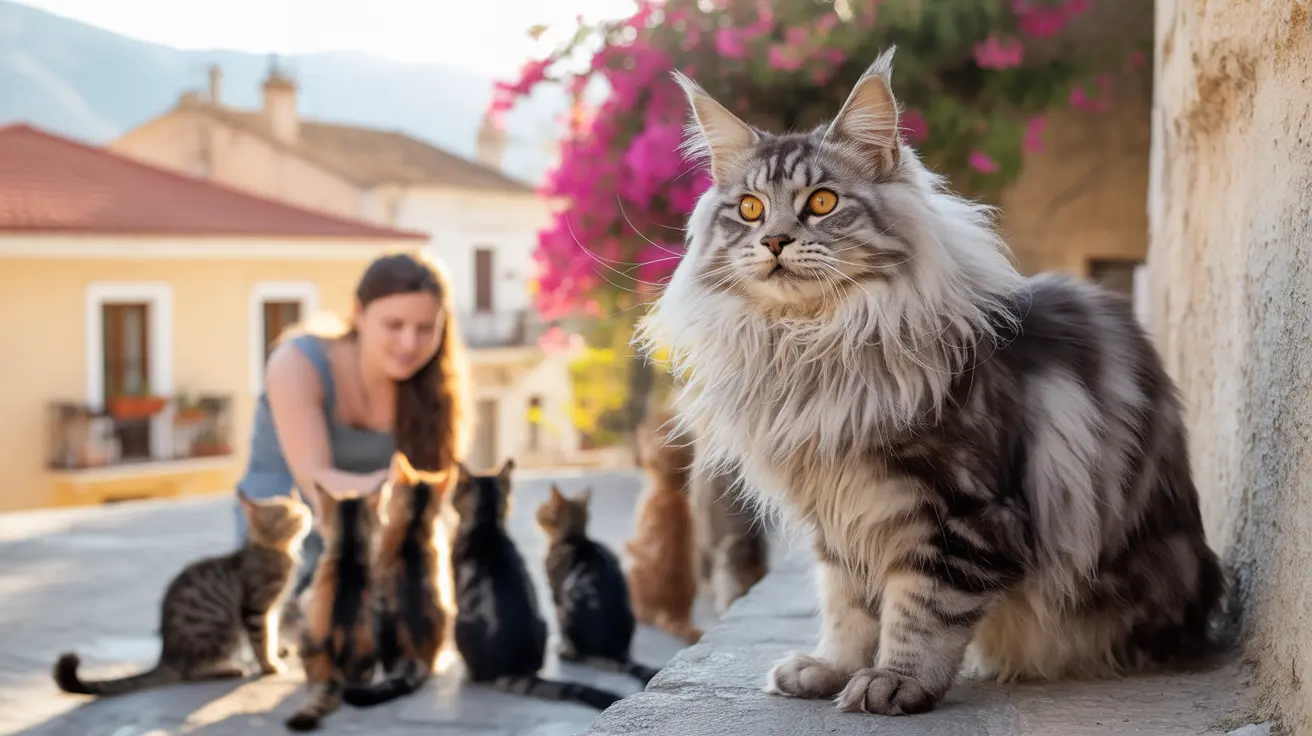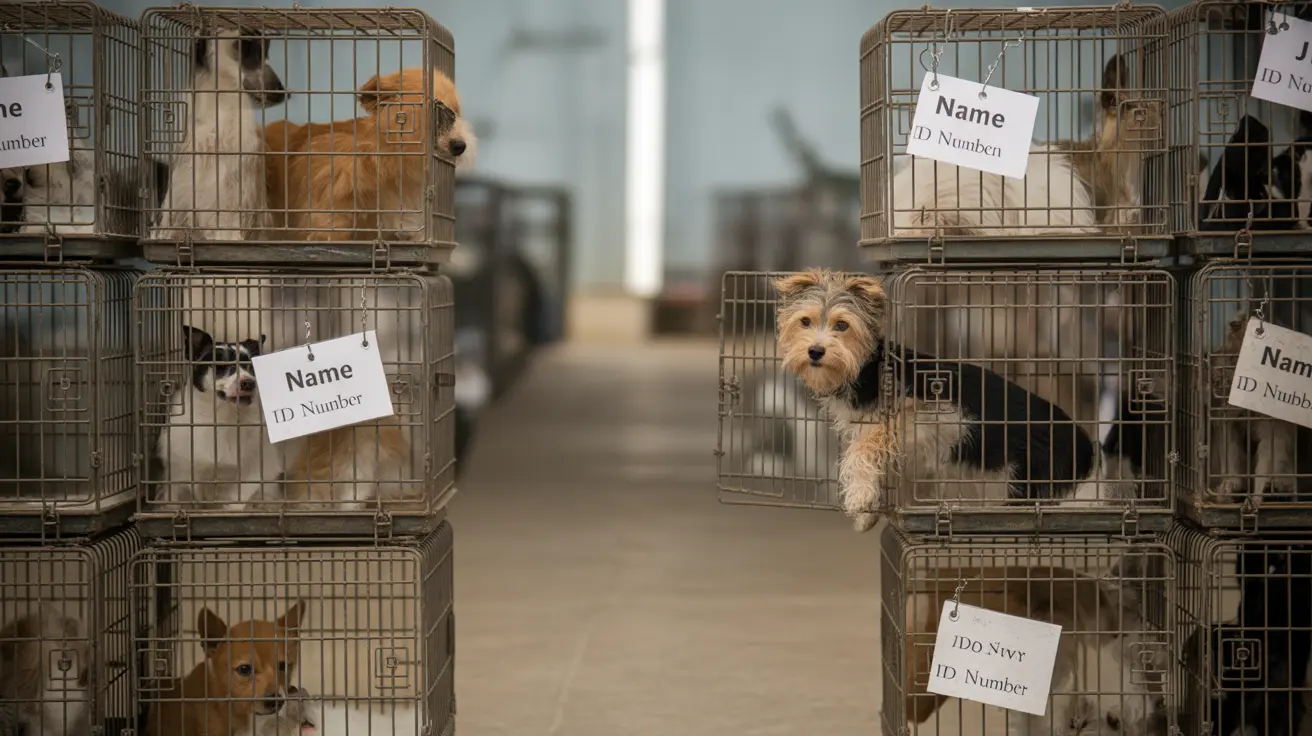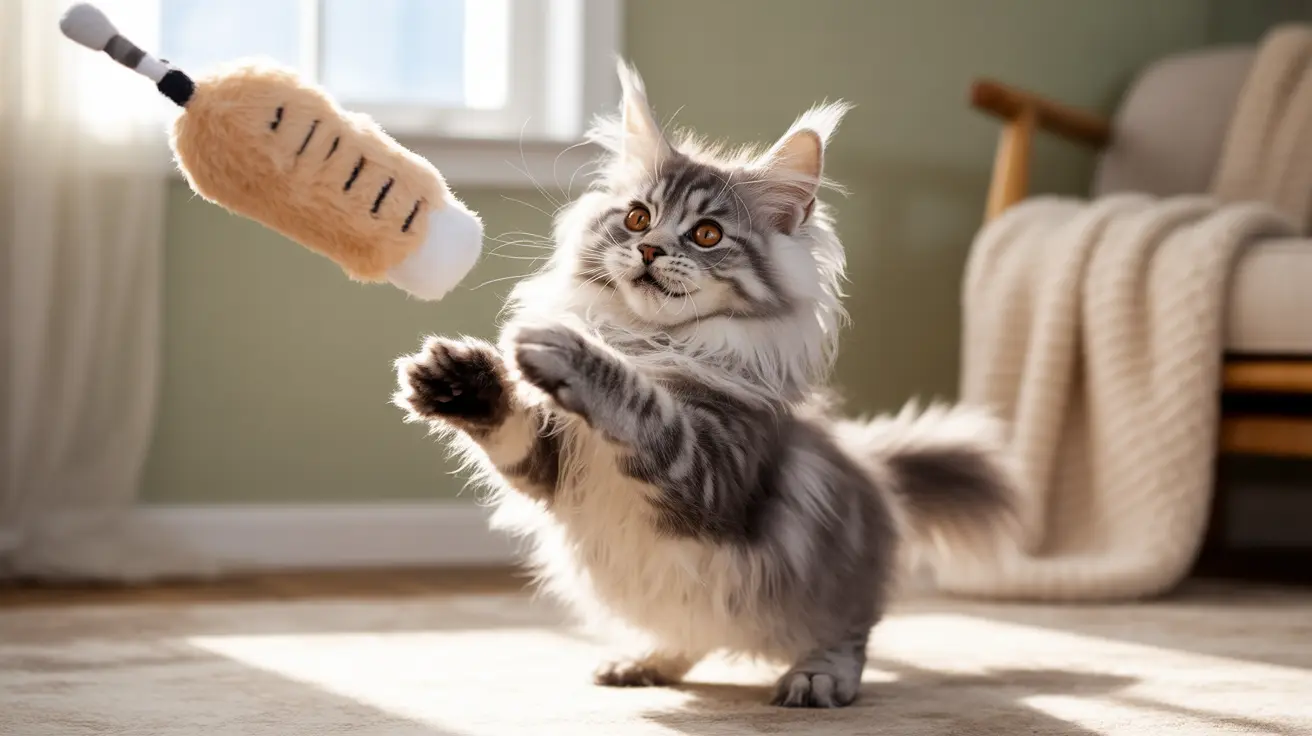Crete Street Cat Feeding Advice: Why You Should Support, Not Feed, the Famous Chonkus Maximus
The picturesque Greek island of Crete has become home to an unlikely celebrity: Chonkus Maximus, an overweight street cat who has captured the hearts of tourists and social media users worldwide. While this hefty feline's story may seem endearing, it highlights a serious problem facing many popular tourist destinations—the well-intentioned but harmful practice of feeding stray cats. Understanding proper Crete street cat feeding advice is crucial for tourists who want to help without causing harm.
Visitors to Crete and similar Mediterranean destinations often encounter numerous street cats and feel compelled to share their meals or purchase food for these seemingly hungry animals. However, what appears to be an act of kindness can actually contribute to significant health problems, environmental issues, and long-term suffering for the very cats people are trying to help. The case of Chonkus Maximus serves as a perfect example of how tourist feeding can lead to obesity and related health complications in street cats.
This comprehensive guide will explore why feeding street cats during your visit to Crete is counterproductive, examine the real challenges facing Greece's stray cat population, and provide practical alternatives for tourists who genuinely want to make a positive impact on animal welfare while traveling responsibly.
The Health Risks of Overfeeding Street Cats
The story of Chonkus Maximus illustrates one of the most immediate consequences of tourist feeding: obesity and its associated health problems. When well-meaning visitors consistently provide food to street cats, they often create situations where cats consume far more calories than they need or can properly utilize. This excess nutrition leads to rapid weight gain, which can cause serious health complications including arthritis, diabetes, and cardiovascular problems.
Beyond obesity, improper feeding practices can lead to nutritional imbalances. Tourist-provided food is typically human food scraps or cheap commercial cat food, which may lack essential nutrients cats need or contain ingredients that are harmful to feline health. This poor nutrition quality, combined with overeating, creates a perfect storm for declining cat welfare despite the abundance of food.
Feeding stray cats also increases their risk of disease transmission. When cats congregate around feeding sites, they're more likely to spread parasites and contagious illnesses such as feline leukemia, calicivirus, and panleukopenia. The stress of overcrowding and competition for food can weaken their immune systems, making them more susceptible to these infections and reducing their overall quality of life.
How Tourist Feeding Creates Dependency and Behavioral Problems
One of the most significant issues with feeding street cats during tourist season is the creation of dependency on human-provided food. Cats that become accustomed to regular feeding from tourists may lose their natural foraging instincts and hunting abilities, making them less capable of surviving independently. This dependency becomes particularly problematic when the tourist season ends and the steady supply of human-provided food disappears.
Tourist feeding also disrupts natural cat behavior patterns and social structures. When food is abundant and easily accessible, cats tend to congregate in larger numbers than would occur naturally. This overcrowding leads to increased stress, territorial disputes, and aggressive behavior among cats. The resulting fights can cause serious injuries and create ongoing welfare problems for the entire local cat population.
Additionally, cats that associate humans with food often become more aggressive in their food-seeking behavior, potentially harassing tourists and local residents. This can lead to conflicts between animal lovers and those who view the cats as nuisances, ultimately resulting in less community support for humane cat management programs.
The Seasonal Feeding Cycle Problem in Tourist Destinations
Crete and similar tourist destinations face a unique challenge known as the seasonal feeding cycle. During peak tourist months, street cats receive abundant food from visitors, leading to improved body condition and increased reproductive success. However, when tourism drops during off-season periods, cats that have become dependent on tourist feeding may face food scarcity and malnutrition.
This cyclical pattern is particularly harmful because it supports higher cat populations during breeding seasons but fails to provide consistent, year-round nutrition. Female cats that are well-fed during tourist season are more likely to become pregnant and produce larger litters. However, when tourist feeding decreases, these additional kittens face starvation and suffering, perpetuating a cycle of overpopulation and poor welfare.
The seasonal nature of tourist feeding also creates challenges for local animal welfare organizations and volunteers who work year-round to manage street cat populations. These groups must deal with the consequences of tourist feeding—increased populations, health problems, and behavioral issues—without the resources to address the root causes of the problems.
Understanding Greece's Street Cat Population Challenge
Greece faces a significant street cat overpopulation problem that extends far beyond individual tourist destinations like Crete. The country has limited state support for animal welfare programs and relies heavily on volunteers and private organizations to address street cat issues. Most communities lack comprehensive spay/neuter programs, which are essential for controlling population growth and improving cat welfare.
Contrary to popular belief, malnutrition is often less of a problem for Greek street cats than inadequate medical care and lack of population control measures. Many local residents regularly feed cats in their neighborhoods, and food is generally available. The real challenges are untreated medical conditions, parasites, infectious diseases, and continued reproduction that maintains unsustainable population levels.
The absence of systematic spay/neuter campaigns means that even well-fed cat populations continue to grow exponentially. A single unspayed female cat and her offspring can produce thousands of descendants over several years, overwhelming the capacity of communities to provide adequate care and creating ongoing welfare problems for future generations of cats.
Effective Spay/Neuter Programs: The Long-Term Solution
The most effective approach to managing street cat populations is the implementation of comprehensive Trap-Neuter-Return (TNR) programs. These programs involve humanely trapping cats, providing spay/neuter surgery and basic medical care, and returning them to their territories where they can live out their lives without continuing to reproduce.
TNR programs offer multiple benefits beyond population control. Spayed and neutered cats exhibit fewer problematic behaviors such as spraying, fighting, and loud mating calls. They're also generally healthier, as they're vaccinated and treated for parasites and diseases during the TNR process. Over time, TNR stabilizes colony sizes and improves the overall health and welfare of street cat populations.
Successful TNR programs require ongoing monitoring and colony management to ensure cats remain healthy and new animals don't join established colonies. This comprehensive approach addresses the root causes of street cat problems rather than simply treating symptoms, making it far more effective than ad hoc feeding efforts by individual tourists or residents.
Ethical Wildlife Tourism and Responsible Animal Interactions
Understanding proper wildlife ethics is essential for tourists who want to observe and appreciate local animals without causing harm. The principle of "observe but don't interfere" applies strongly to street cat encounters during travel. While it's natural to feel compassion for cats that appear hungry or in need, direct feeding interventions often cause more harm than good.
Ethical wildlife tourism emphasizes supporting local conservation and animal welfare efforts rather than taking individual action that may have unintended consequences. This approach recognizes that local communities and organizations have the best understanding of their animal populations and the most effective strategies for addressing welfare concerns.
Tourists can practice responsible animal interactions by maintaining appropriate distances, avoiding feeding or touching wild or stray animals, and supporting established programs that address animal welfare through systematic, science-based approaches. This responsible tourism mindset helps protect both animal welfare and ecosystem health while still allowing visitors to appreciate and enjoy wildlife encounters.
Alternative Ways Tourists Can Support Street Cat Welfare
Visitors to Crete who want to help street cats have several effective alternatives to direct feeding. The most impactful approach is donating to local animal welfare organizations that work year-round to address cat population and health issues. These groups use donations to fund spay/neuter programs, provide medical care, and support adoption efforts for socialized cats.
Tourists can research and support specific programs before or during their visit. Many Greek animal welfare organizations have websites with information about their work and donation options. Some groups also offer volunteer opportunities for visitors who want to contribute time and effort to animal welfare causes during their stay.
Another effective way to help is by spreading awareness about responsible animal tourism practices. Sharing information about why feeding street cats is harmful and promoting ethical alternatives helps educate other travelers and reduces the overall impact of well-intentioned but counterproductive tourist feeding.
Legal and Environmental Implications of Feeding Stray Animals
Feeding stray cats in tourist areas can have legal implications that visitors may not consider. Some municipalities have ordinances prohibiting the feeding of stray animals due to public health concerns, property damage issues, and environmental impacts. Tourists who feed street cats may unknowingly violate local laws and face fines or other penalties.
The environmental consequences of cat feeding extend beyond the immediate welfare of the cats themselves. Feeding stations and cat congregations can attract other wildlife such as rats, raccoons, and birds, potentially disrupting local ecosystems. Additionally, concentrated cat populations can impact native bird and small mammal populations through increased predation pressure.
Property damage is another concern associated with feeding stray cats. Cats may use areas around feeding sites for elimination, causing odors and sanitation problems. They may also engage in territorial marking behaviors that damage property and create conflicts with local residents and business owners.
Successful Case Studies: Community-Based Cat Management Programs
Several communities have successfully addressed street cat populations through comprehensive, community-based programs that demonstrate alternatives to individual feeding efforts. These programs typically combine TNR with public education, volunteer training, and ongoing colony monitoring to achieve long-term improvements in cat welfare and community relations.
Effective programs emphasize coordination between animal welfare organizations, local government, veterinary services, and community volunteers. This collaborative approach ensures that cat management efforts are sustainable, well-funded, and supported by the broader community. Such programs also typically include provisions for finding homes for socialized cats and kittens while managing feral populations humanely.
The most successful programs also address the human elements of street cat issues by educating residents and visitors about responsible pet ownership, the importance of spaying and neutering, and the ecological and health impacts of unmanaged cat populations. This comprehensive education component helps prevent future overpopulation problems and builds community support for ongoing management efforts.
Practical Tips for Responsible Animal Support While Traveling
Tourists who want to support animal welfare while traveling should research reputable local organizations before their trip. Look for groups that focus on spay/neuter programs, medical care, and adoption services rather than simple feeding programs. Many established animal welfare organizations have transparent information about their work and financial accountability.
Consider timing your support to be most effective. Donations made during off-season periods often have greater impact because organizations face reduced funding when tourist numbers are low. Some groups also offer sponsorship programs where donors can support specific cats through their medical care and rehabilitation.
If you encounter a cat that appears to be injured or seriously ill during your visit, contact local animal welfare organizations or veterinary clinics rather than attempting to provide care yourself. These professionals have the expertise and resources to address medical issues safely and effectively.
Frequently Asked Questions
Why is Chonkus Maximus famous and what does his story teach us?
Chonkus Maximus became a social media sensation as an overweight street cat in Crete who attracted tourist attention. His story illustrates the negative consequences of tourist feeding, showing how well-intentioned visitors can contribute to obesity and health problems in street cats through overfeeding and inappropriate food choices.
What health problems can result from feeding street cats improperly?
Feeding street cats can lead to obesity, arthritis, diabetes, nutritional imbalances, and increased disease transmission. When cats congregate around feeding sites, they're more likely to spread parasites and contagious illnesses such as feline leukemia, calicivirus, and panleukopenia. Stress from overcrowding and competition for food can also weaken their immune systems.
How does tourist feeding create dependency problems for street cats?
Tourist feeding creates dependency by causing cats to lose their natural foraging instincts and hunting abilities. When the tourist season ends and regular feeding stops, dependent cats may face malnutrition and struggle to survive independently. This seasonal cycle can lead to increased suffering during off-peak periods.
What is TNR and why is it more effective than feeding programs?
Trap-Neuter-Return (TNR) involves humanely trapping cats, providing spay/neuter surgery and medical care, then returning them to their territories. TNR is more effective than feeding because it addresses the root cause of overpopulation, reduces problematic behaviors like fighting and spraying, and improves overall cat health through vaccination and parasite treatment.
How can tourists help street cats without feeding them directly?
Tourists can help by donating to local animal welfare organizations that fund spay/neuter programs and medical care, volunteering with established groups, and spreading awareness about responsible animal tourism. Supporting these systematic approaches is more effective than individual feeding efforts.
Are there legal consequences for feeding stray cats in tourist areas?
Some municipalities have ordinances prohibiting feeding stray animals due to public health concerns, property damage, and environmental impacts. Tourists who feed street cats may unknowingly violate local laws and face fines. It's important to research local regulations before attempting to help stray animals.
What should I do if I encounter an injured street cat while traveling?
Contact local animal welfare organizations or veterinary clinics rather than attempting to provide care yourself. These professionals have the expertise and resources to address medical issues safely and effectively. Avoid handling injured animals as they may be scared and could bite or scratch in self-defense.
Conclusion
The story of Chonkus Maximus and countless other street cats in Crete serves as a powerful reminder that good intentions don't always lead to good outcomes when it comes to animal welfare. While feeding street cats may provide immediate emotional satisfaction for tourists, it often contributes to long-term problems including obesity, dependency, overpopulation, and suffering. Understanding proper Crete street cat feeding advice means recognizing that the most compassionate approach is often to refrain from feeding and instead support systematic solutions that address root causes.
By choosing to support local animal welfare organizations, TNR programs, and responsible tourism practices, visitors to Crete can make a meaningful difference in the lives of street cats while respecting the complex challenges faced by local communities. This approach not only benefits the cats but also contributes to sustainable tourism that protects both animal welfare and environmental health for future generations of both cats and travelers to enjoy.






